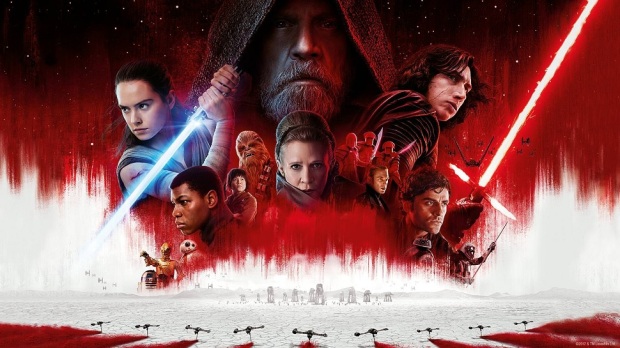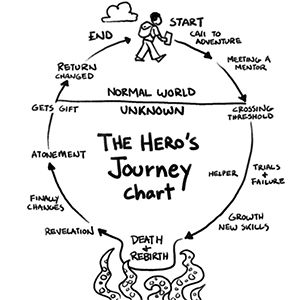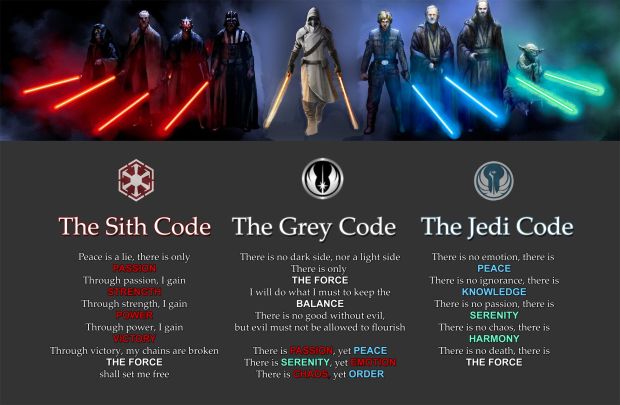The Star Wars story, whether the narrative contained within the films, TV series, books and comic surrounding the lives of characters and the constant and neverending battle between the light and dark sides of the Force, or the story of such unexpected success with its ubiquitous reach into 20th and 21st century popular culture, is an inspiring one indeed.
With the dissatisfaction surrounding the prequel trilogy that ran from 1999 to 2005, fans were skeptical when a sequel series was announced, with the inclusion of both new and old characters, new and old pieces of lore, with the first film of the trilogy, The Force Awakens, released in 2015 to mixed reviews.
The film was loved, the characters were loved, and fans were generally excited over the promise of another trilogy they could sink their teeth into, but one major complaint about The Force Awakens was that it contained too many references and callbacks to the original trilogy that it failed to be a new, refreshing tale of its own. In its attempt to satisfy and stay away from the scathing anger of dedicated fans, the film was said to be too much like A New Hope. The influence of the Skywalker bloodline still loomed over the plot, causing newer characters like the ex-stormtrooper Finn, and Resistance pilot, Poe Dameron, to fade into the background. The focus was on Rey, the protagonist of the film, whose backstory was speculated to echo those of Anakin and Luke Skywalker’s, giving rise to claims that she might be a Skywalker herself.
Rian Johnson, handed over the responsibility of directing The Last Jedi, definitely took all this criticism into account. For those who have yet to watch the film, please turn away now for this is not a spoiler free review.

Aside from the expected return of the young force-sensitive Jedi in training seduced to the dark side, in the form of Kylo Ren (Ben Solo, the son of Leia Organa and Han Solo), and Rey’s commencement of her training with Luke Skywalker, the film draws on other familiar, and unfamiliar elements of Joseph Campbell definition of the hero’s journey in classical mythology.

In the previous two trilogies, the hero of the films was also its protagonist, Luke Skywalker in the originals and Anakin Skywalker in the prequels, though their final destinations ended up being quite very different. The Last Jedi seems to follow the same pattern, where Rey is the hero who has to face a few tasks and obstacles thrown her way before being celebrated as one both within the narrative, and in the fandom. Luke Skywalker becomes as important a figure in the story, as much as Rey or her dark-side counterpart, Kylo Ren.
“I know only one truth. It’s time for the Jedi to end.” [Luke Skywalker]
“Let the past die. Kill it, if you have to. That’s the only way to become what you were meant to be.” [Kylo Ren]
With a title such as The Last Jedi, it is no surprise that this is a film obsessed with the end of things, be it the end of the Jedi, the end of the story drawing near, the end of the Skywalker line, the end of the Star Wars mythos as we are familiar with it; but the sense that the past has been held on to for too long and is quickly becoming an obstacle in the path of change and progress.
Perhaps the most pivotal scene in The Last Jedi is when Master Yoda appears in his force ghost form, confronting Luke after Rey left him to look for Kylo Ren, and destroys the carefully curated and maintained library of ancient Jedi texts and manuscripts, effectively burning down the entire system of the ancient Jedi religion that Luke seemed to adhere almost strictly to. Both Kylo Ren and Luke Skywalker forge new relationships with Rey, with the audience led to expect that Rey will choose either side to fall on, the darkness of the First Order, or light of the Resistance, heralded by General Leia Organa.
But the question posed to Rey, and to the audience is this: is there really a need for there to be a dark side and a light side to the Force? During her training, Rey comments that she sees cold and warmth, peace and violence, light and dark, and Luke tells her that the Force is what keeps these opposing elements in balance. By destroying the past annals of the Jedi, Yoda has guided Luke towards making his own decisions, free of any system or order he has to abide by.
Perhaps, The Last Jedi really does mark the end of the Jedi and the Sith, and the beginning of the Grey Jedi.

Free will and determinism also came into consideration, when Rey confronts Luke Skywalker for his blind fear of a second Vader in the form of a powerful Ben Solo who was becoming increasingly harder to control, and which ironically resulted in the creation of Kylo Ren himself. It was because Luke was so afraid of the past repeating itself, and having to relive the trauma and devastation of losing a young Jedi-to-be to the dark side, that he had the fleeting intention to kill Ben Solo in his sleep, which cemented his descent into becoming Kylo Ren. Perhaps his mistake was his inability to let go of the past, which had manifested itself into the blind fear of its repetition in his psyche, which ironically spearheaded the creation of the First Order.

Perhaps, this where The Last Jedi sets itself apart from its predecessors. Luke Skywalker, the unblemished and decorated hero of the original trilogy, has made a mistake that could have possibly led to the creation of the First Order, which seems to be deadlier than the Empire under Vader ever was.
Rey, the heroic protagonist of the sequel trilogy, is in conflict. She wants to train in the ways of the Jedi, but at the same time, there seems to be an inkling of suspicion and skepticism in her, especially after she saw what Luke Skywalker, the hero she so unfailingly admired, is capable of making such a dire mistake.
Kylo Ren, often consumed by his bouts of rage, is a sympathetic figure, struggling to keep himself together while desperately asserting control over all those he is able to, and wants to be neither Sith nor Jedi, bending the knee to no one but perhaps himself.
As a fitting farewell to the heroes who had accompanied us from the original trilogy, with the deaths of Han Solo in The Force Awakens, Luke Skywalker in The Last Jedi and the real-life death of Carrie Fisher preventing Leia’s return in Episode IX, the sequel trilogy has finally managed to shake itself free of the chains of the past, soaring into the skies with a story of its own.
Rating: 5/5 (this film is a good balance of old and new, action and plot, good and evil, and could possibly work well as a standalone film for non-fans)
Note: Special thanks to my sister, Tarifah, for the lengthy discussions we had after the film, many of the ideas and thoughts which have found their way into this review. May the force be with you, always.